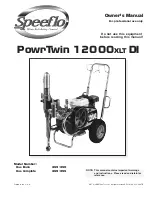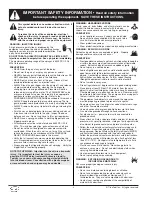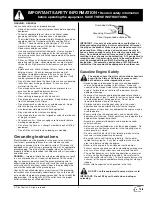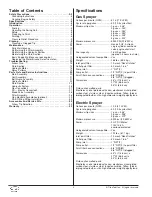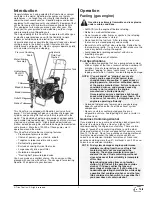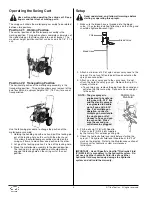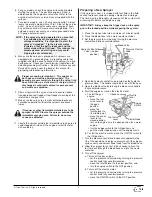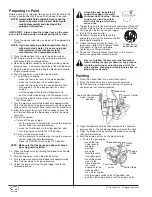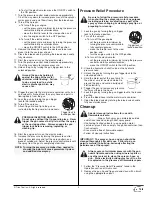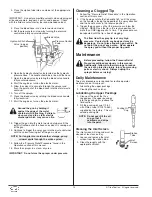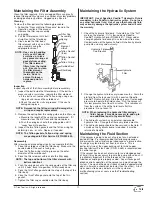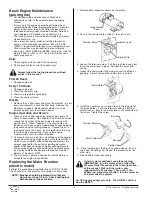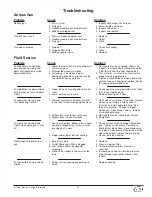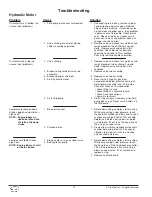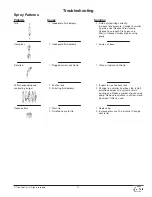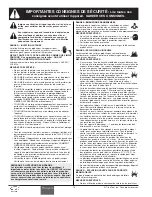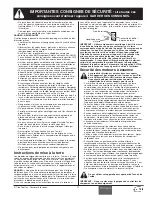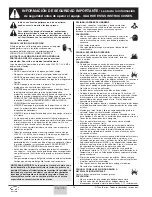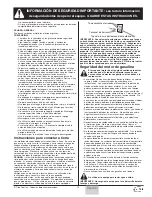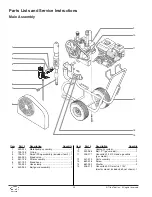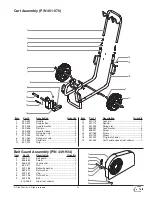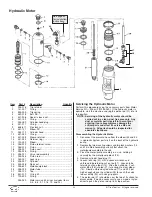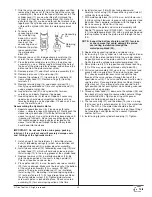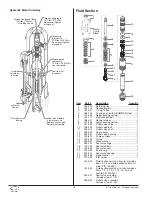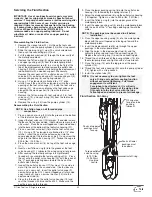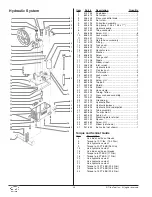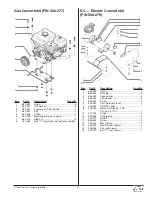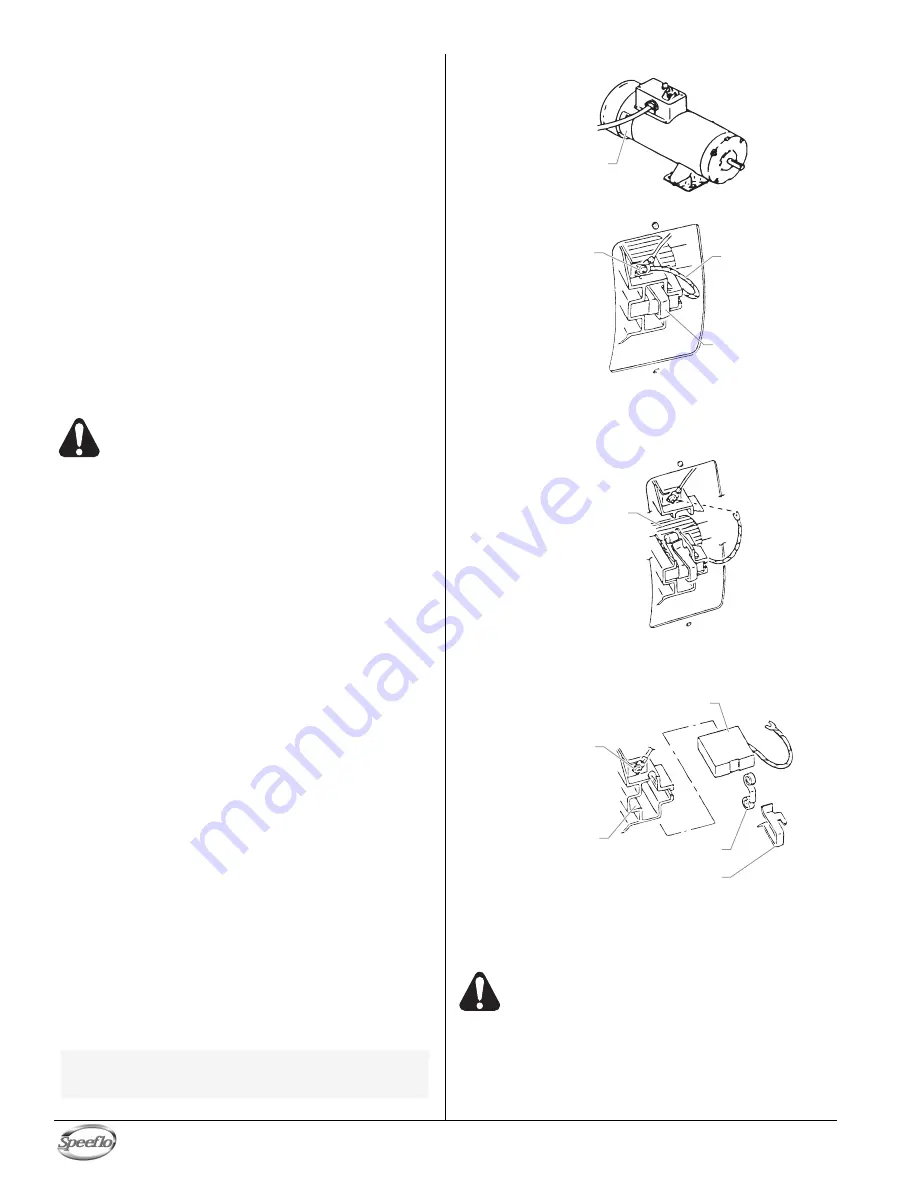
Basic Engine Maintenance
(gas engine)
• For detailed engine maintenance and technical
specifications refer to the separate gasoline engine
manual.
• All service to the engine should be performed by an
authorized Honda Power Equipment dealer. To locate a
dealer in your area, look in the Yellow Pages of your
telephone directory under Gasoline Engines, Garden &
Lawn Equipment & Supplies, Lawn Mowers, etc.
• The Honda engine is warranted exclusively by American
Honda Motor Co., Inc.
• Use a premium quality motor oil certified to meet or
exceed U.S. Automotive requirement SG.or SF. SAE
10W30 is recommended for general all temperature use.
Other viscosities may be required in other climates.
• Use only a (NGK) BP6ES or BPR6E spark plug. Gap the
plug to 0.028 to 0.031 In. (0.7 to 0.8 mm) Always use a
spark plug wrench.
Daily
1. Check engine oil level, and fill as necessary.
2. Check gasoline level, and fill as necessary.
Always follow the fueling procedure outlined
earlier in this manual.
First 20 Hours
1. Change engine oil.
Every 100 Hours
1. Change engine oil.
2. Clean the sediment cup.
3. Clean and re-gap the spark plug.
4. Clean the spark arrestor.
Weekly
1. Remove the air filter cover and clean the element. In very
dusty environments, check the filter daily. Replace the
element as needed. Replacement elements can be
purchased from your local Honda dealer.
Engine Operation and Service
1. Clean and oil air filter pad on gasoline engine every 25
hours or once weekly. Do not permit the air intake screen
around the fly wheel of the gas engine to load up with
paint or trash. Clean it regularly. The service life and
efficiency of the gas engine model depends upon keeping
the gasoline engine running properly. Change the oil in
the engine every 100 hours. Failure to observe this may
result in engine overheating. Consult the engine
manufacturer's service manual provided.
2. To conserve fuel, service life, and efficiency of the sprayer,
always operate the gasoline engine at the lowest RPM at
which it runs smoothly without laboring and delivers the
amount required for the particular painting operation.
Higher RPM does not produce higher working pressure.
The gasoline engine is connected to the hydraulic pump
by a pulley combination designed to produce full paint
delivery at maximum RPM.
3. The warranty on gasoline engines or electric motors is
limited to the original manufacturer.
Replacing the Motor Brushes
(electric motor)
Perform this procedure using Motor Brush Kit P/N 978-050.
The kit consists of two brushes, two springs, and two clips.
NOTE: Brushes should be replaced when they are
worn to less than 1/2 inch. Check and replace
both brushes at the same time.
12
© Titan Tool Inc. All rights reserved.
1. Remove both inspection covers on the motor.
2. Push in the spring clip to unhook it, then pull it out..
3. Loosen the terminal screw. Pull the brush lead away, but
leave the motor lead in place. Remove the brush and
spring.
4. Inspect the commutator for burning, excessive pitting or
gouging. A black color on the commutator is normal.
5. Install the new brush so its lead slides in the long slot of
the brush holder. Push the terminal under the terminal
screw washer. Ensure the motor lead is still connected at
the screw. Tighten the screw.
6. Place the spring on the brush as shown above. Push in
and hook the spring clip. Repeat this procedure for the
other side.
7. Reinstall both inspection covers.
If electric motor overloads and stops running,
IMMEDIATELY turn the motor off and follow the
Pressure Relief Procedure in the Cleanup section
of this manual. Wait until the motor cools
(approximately 30 minutes). Then push in the
bubble top, manual reset button, turn the motor on
and pressurize the system.
For CSA approved sprayers only: The ON/OFF switch is
also the RESET!
Brush
Brush Holder
Terminal Screw
Spring
Spring Clip
Commutator
Terminal Screw
Spring Clip
Brush Lead
Inspection
Cover

